Jurassic World Dominion, directed by Colin Trevorrow, is a highly anticipated release, and the film’s Prologue, which takes place 65 million years before the events of the film, introduces seven new dinosaur species to the Jurassic World franchise. The Jurassic World Trilogy is expected to conclude with this film.
It takes place four years after the events of Jurassic World: Fallen Kingdom and takes place in a world four years later. Dinosaurs have been released free in Dominion, forcing humanity to coexist with them. Dr. Alan Grant (Sam Neill), Dr. Ian Malcolm (Jeff Goldblum), and Dr. Ellie Sattler (Laura Dern) will all reprise their roles in the franchise.
The T-Rex, of course, will return. The Mososaurus and Blue the Velociraptor will also appear, but there will be other new dinosaurs in this film. Dominion, unlike the other two Jurassic World films, will not feature any hybrid monsters.
Along with the Tyrannosaurus Rex, this film will focus on the seven dinosaur species that will enter the franchise in Dominion.
Before we get started with the programming, we have a tiny request for our viewers. Please consider being a Marvelous Videos subscriber. Like and comment on our videos, and click the bell button to get notified when we add new ones. We would be grateful, and we hope to provide you with the greatest nerdy stuff possible. So, without further ado, let us get started with this video.
Dreadnoughtus
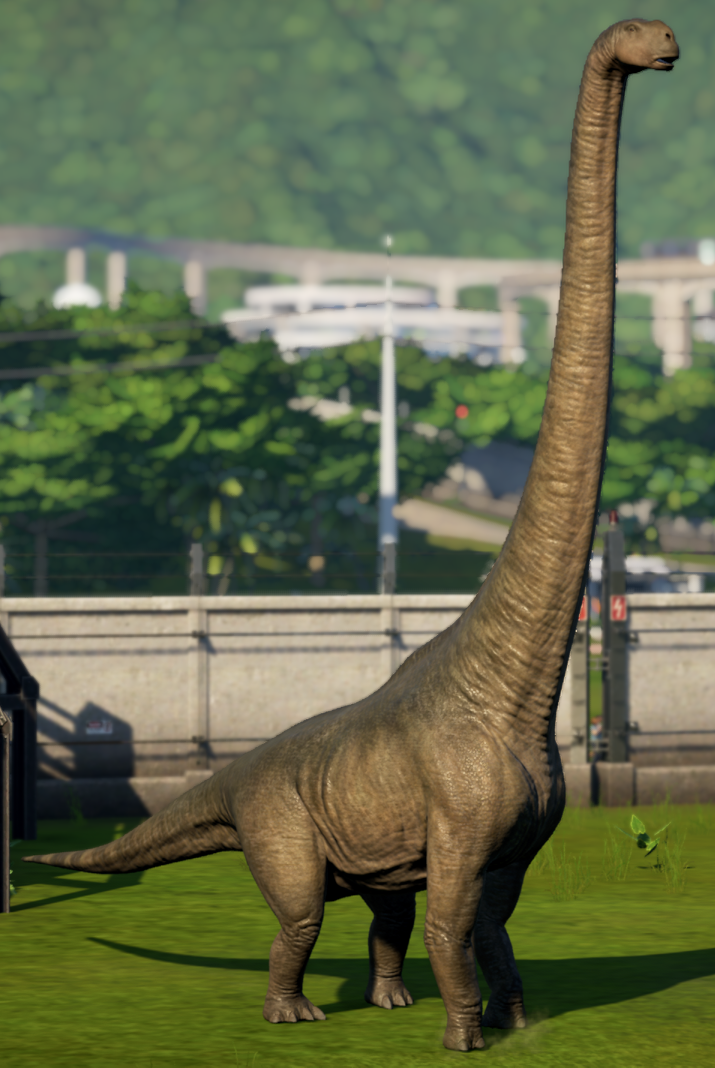
Dreadnoughtus is a new species of dinosaur that makes its appearance in Jurassic World Dominion. This sauropod is similar to the brachiosaurus. They lived during the Late Cretaceous Period. They are believed to have existed since 77 million years ago until its demise and were found in South America. Due to its enormous titan-like size, it is considered to be the heaviest dinosaur ever. In fact, it is believed that they could grow much larger than what has been estimated from its fossil.
As per research, dreadnoughts are roughly 26 meters in height and weigh a whopping 65 tons. It is believed to be a titanosaur alongside other gigantic dinosaurs such as the Saltasaurus and the Argentinosaurus.
As per the research conducted on its fossils, dreadnoughts are believed to have been herbivorous dinosaurs. They probably developed their elongated necks to reach high trees for consuming vegetation. It also has a long, muscular tail which, according to paleontologists, helps ward off and fight predators.
In the prologue for Jurassic World: Dominion, these are the first dinosaurs that make an appearance. They are seen walking on land and across the water while one of them bends downwards to drink water.
Quetzalcoatlus
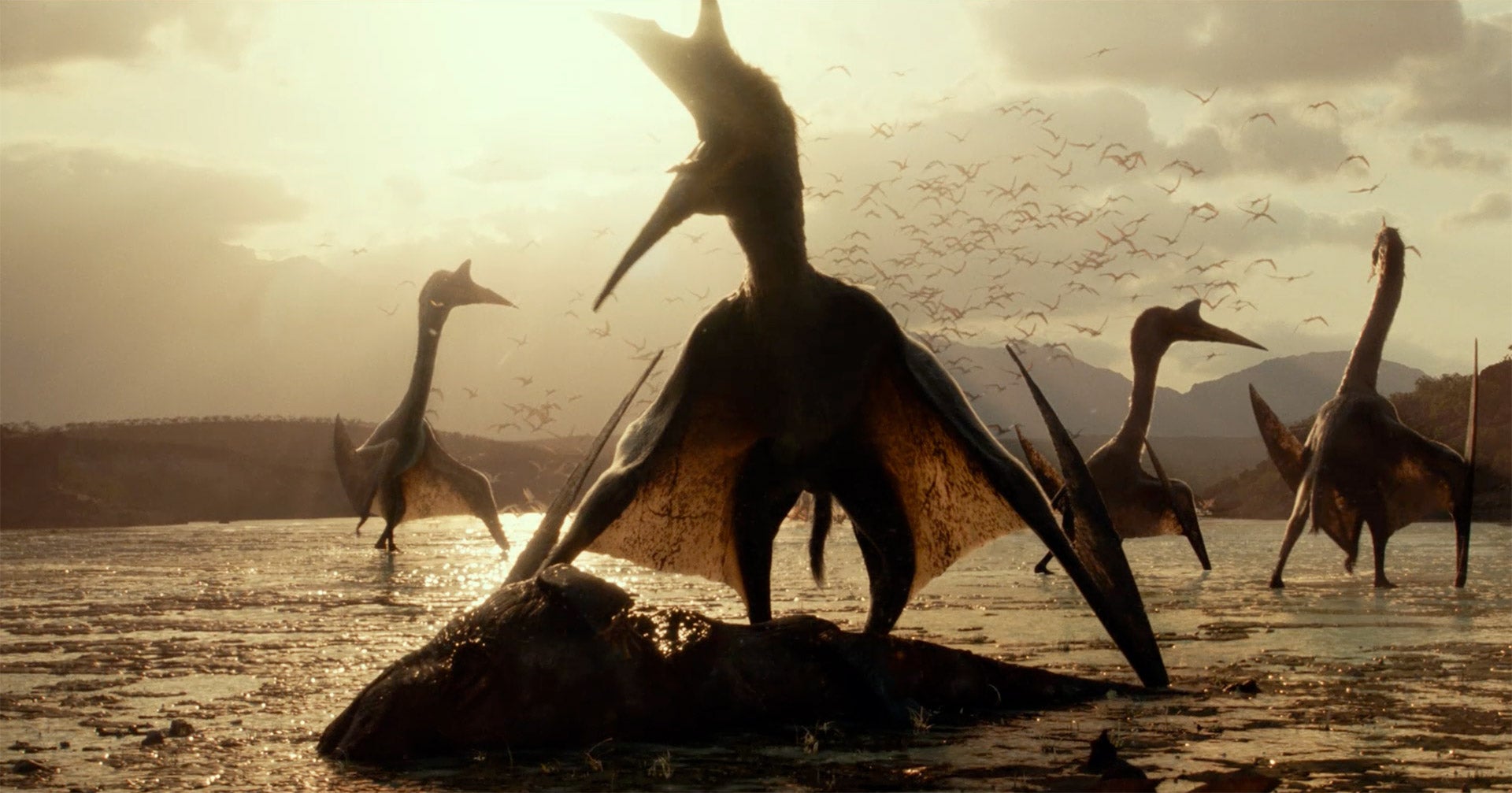
These are pterosaurs that were found in Texas during the Late Cretaceous Period, almost 70 million years ago. Quetzalcoatlus comes from the family of the Azhdarchidae. The Azhdarchidae are a family of pterosaurs with long, stiff necks and no teeth. They are named after Quetzalcoatl, a Mesoamerican serpent God.
The fossils of these creatures were first discovered in Texas, in the United States by geologist Douglas A. Lawson in 1971 at the Maastrichtian Javelina Formation at Big Bend National Park. According to the fossil specimen, these creatures have wings with a huge span.
In Jurassic World: Dominion, four Quetzalcoatlus land near some Pteranodons during a flashback scene. Together, they scavenge the remains of some animal. In fact, they were introduced in the franchise in Jurassic Park III and appeared in the first two Jurassic World movies.
These creatures are a lot more dangerous than the regular Pteranodons as well.
Oviraptor
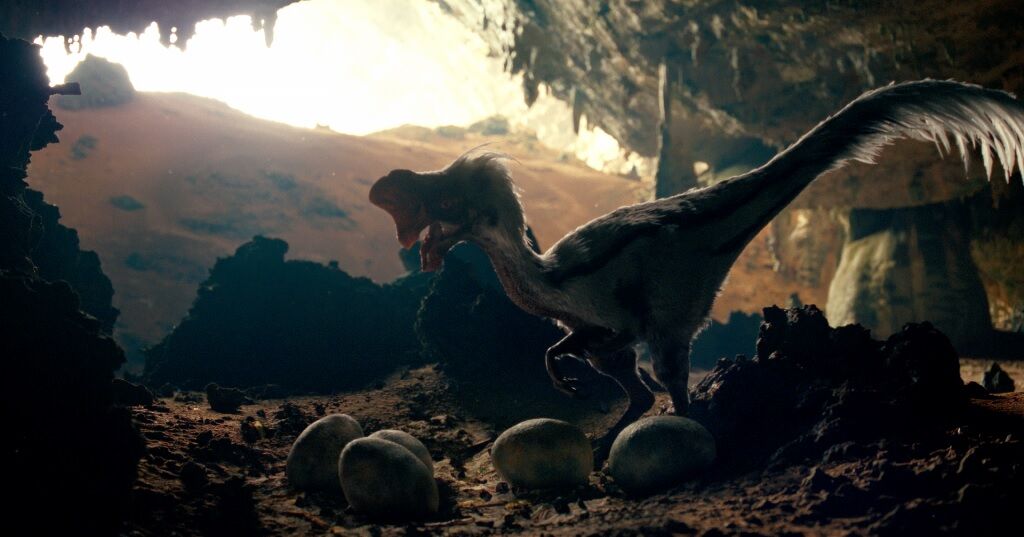
These raptors do not get much of the limelight, at least not in the trailer. They have some very unique features, such as being feathered. It has a beak instead of teeth while the pair of teeth she does have is at the roof of its mouth.
In the Prologue, it is seen raiding the nest of a large dinosaur to steal its egg. They are similar to Velociraptors but are smaller when it comes to size.
It gets its name Oviraptor because it resides on nests with eggs. Mostly, those eggs belong to the Oviraptor, and they protect it from other dinosaurs. However, the eggs have intelligence as well and try to protect the Oviraptors.
On its forehead, it has a thin crest of bone. Different species with Oviraptors tend to continue changing with time forever. Its jaws are massively strong but several researchers and historians have stated that they are herbivores, since the skull of the creature isn’t wired to eat meat.
It has a thin crest of bone on the forehead, which tends to vary in each species of this genus. They were also mentioned in the novels but not cloned by InGen. During the flashback scene in Jurassic World: Dominion, an Oviraptor is seen raiding the eggs from the nest of a random dinosaur.
Nasutoceratops
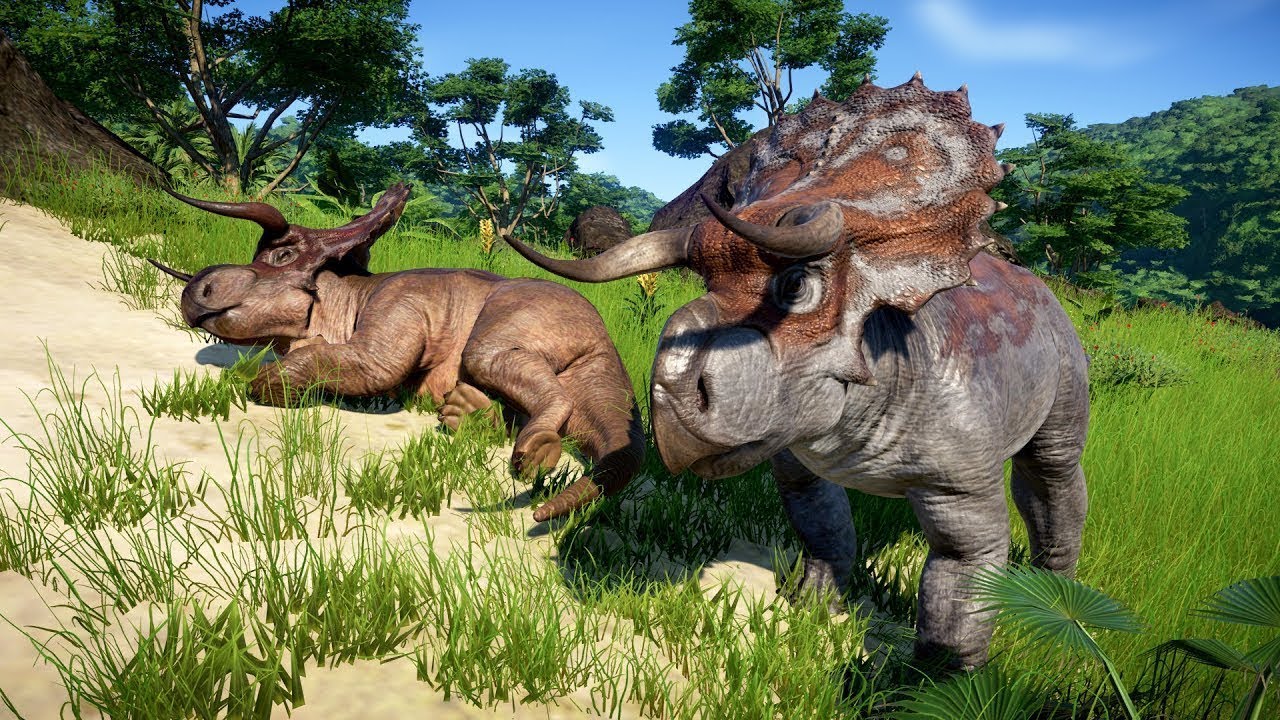
These horned dinosaurs look similar to the Sinoteratops and the Triceratops. However, their horns are shorter and extend from the armored plate in the head. These dinosaurs were found during the Late Cretaceous period in Utah, United States.
Its snout is short and thick. Its horns are above its eyes and extend to the end of its mouth, well, almost. Their horns grow in a fashion similar to that of bulls. It grows to the side at first and then out instead of growing straight. Their horns are larger than that sported by every other creature of the centrosaurine sub-family.
It shares its habitat with the Ornithomimus, Parasaurolophus, and the Teratophoneus.
After the events of Lockwood Manor, two fully-grown Nasutoceratops had appeared in the wild. They began to breed with one another and their infant was the first dinosaur that was born in the United States. Once, the female foraged the camping ground of the Big Rock National Park with her infant. However, a hungry Allosaurus ended up attacking them until a male Nasutoceratops joined them to fight the new adversities and escaped with them.
Despite looking very similar to the triceratops, there are some fundamental differences between the two. The clones of the Nasutoceratops have sharper frill horns, feet like elephants, and shrink-wrapped frill holes.
In the Prologue, the Nasutoceratops move in hers towards the edge of the water hole.
Moros Intrepidus
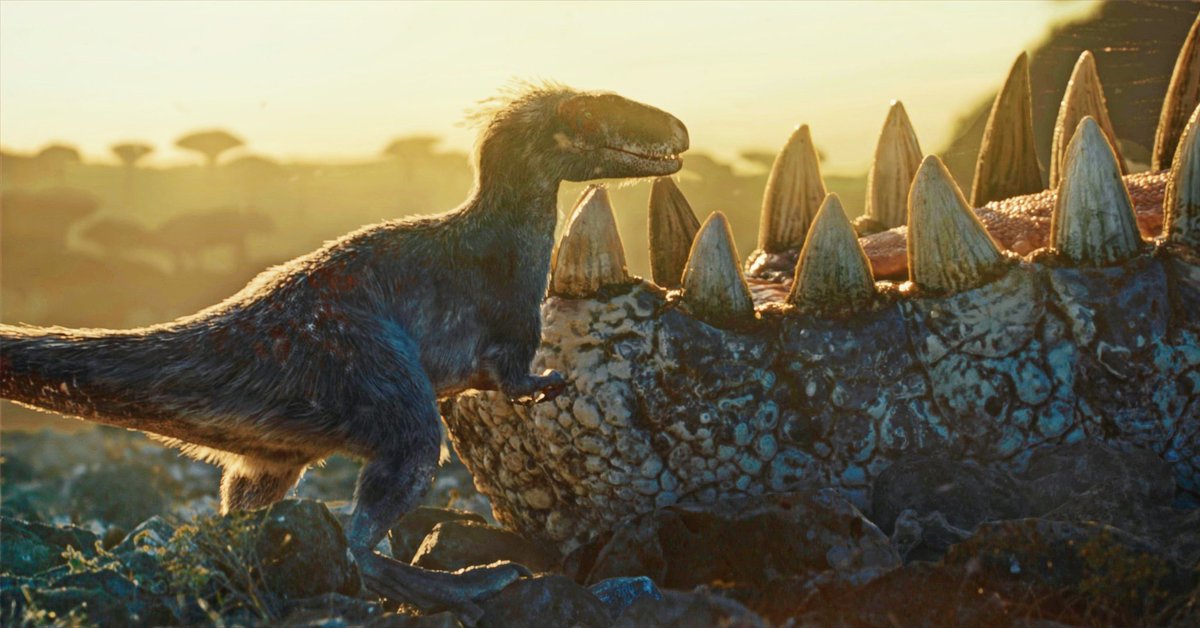
This is a genus of the tyrannosauroid theropod. It lived in the Late Cretaceous period in a place which is now Utah in the United States. The only species in this genus is the M. intrepid. Moros stands for the diagnostic tyrannosauroid material, the one of its earliest kind.
In Jurassic World: Dominion, it appears during the flashback scene which takes the audience back to the prehistoric time during the Age of Reptiles. In that scene, Moros eats rotten flesh which was stuck on a Giganotosaurus. After a Tyrannosaurus appears, the Moros Intrepidus flees.
Iguanodon
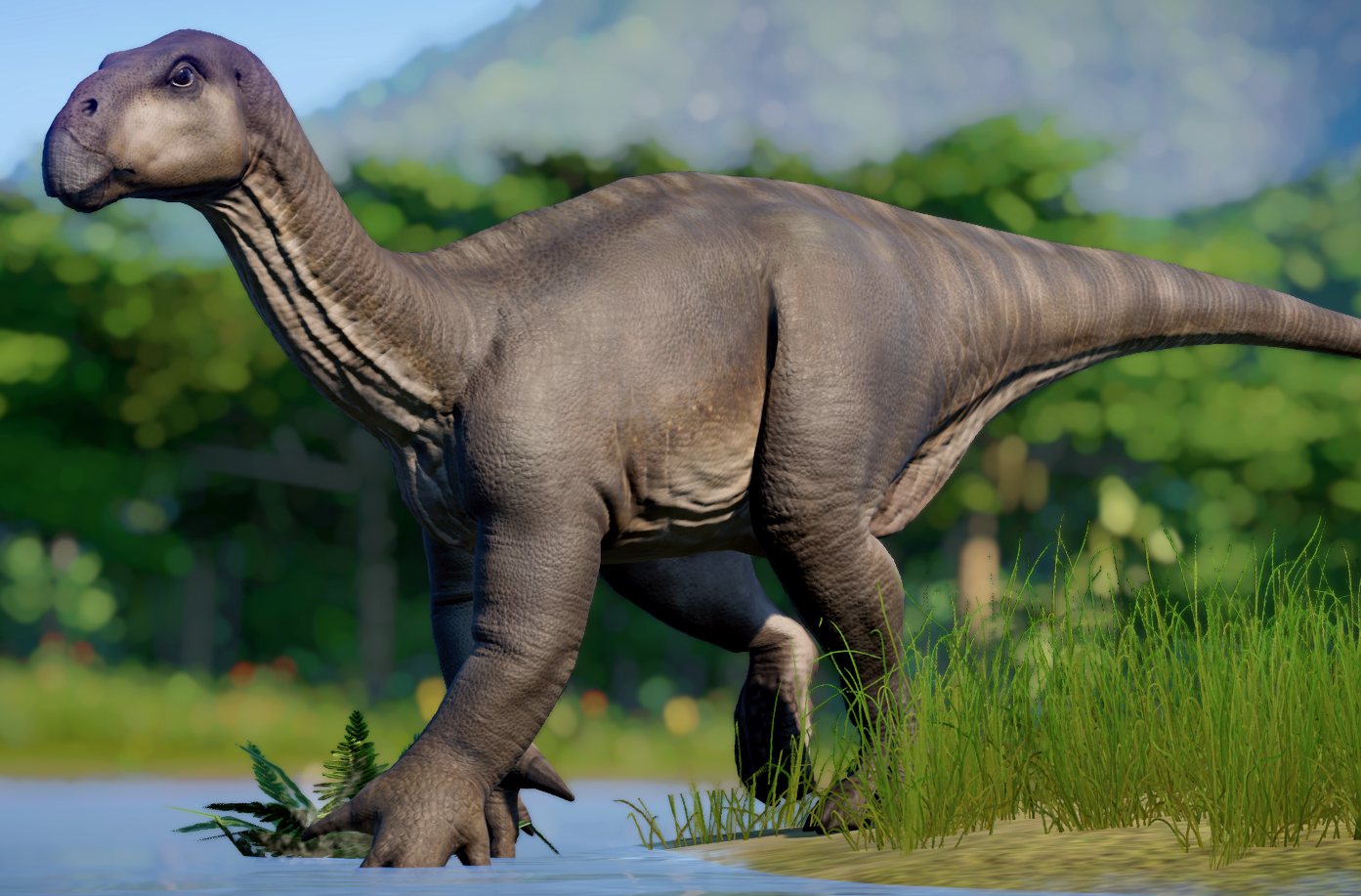
Iguanodons are classified under ornithopods. It apparently stands on its hindlimbs but is able to walk on all fours. When attacked, the Iguanodon attacks its predator with a powerful thumb spike.
After appearing in Dinosaur, an animated film by Disney, the popularity of Iguanodons skyrocketed. Before its surge in popularity, it was kind of similar to a prototype dinosaur that paleontologists looked to understand what dinosaurs looked like. This is because Iguanodons were one of the first dinosaurs to be discovered, ever.
The teeth of the Iguanodon were discovered in 1820s England. Later, in 1977, all these fossils were rediscovered in the British Museum.
The teeth of the Iguanodon were similar to that of a modern iguana. This was discovered by the paleontologist Gideon Mantell. At first, he thought that this creature was a gigantic and prehistoric version of the iguana, just extinct.
In the film, the Iguanodon we see is a bit smaller and is probably a juvenile. At first, it is seen grazing during the Prologue. However, it stops its business after the Giganotosaurus and the Tyrannosaurus Rex.
Giganotosaurus
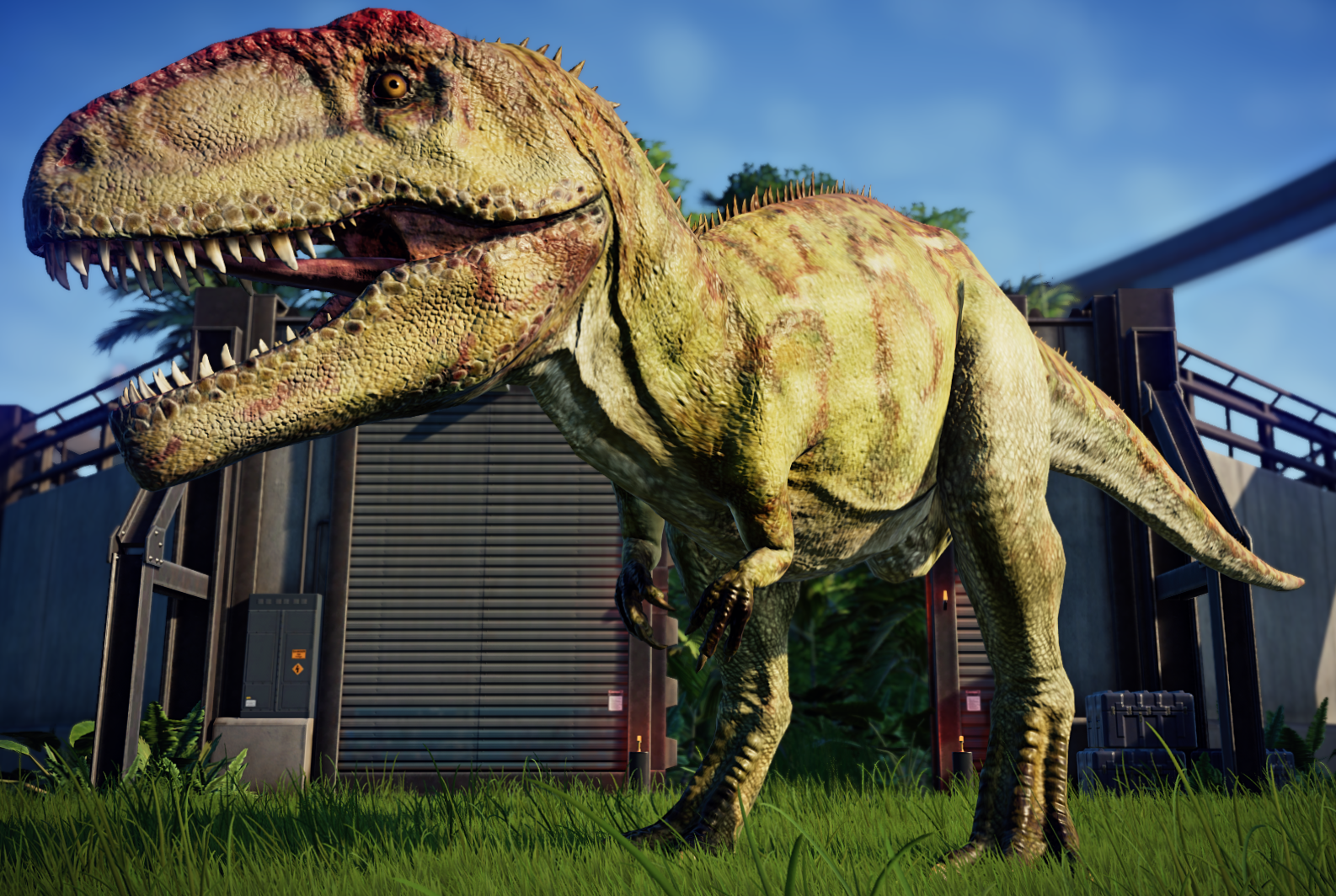
This genus of theropod appeared in Jurassic World: Dominion and loyal to its name, happens to be huge. It is carnivorous and the largest carnosaur to ever exist on Earth. This record was previously held by the Tyrannosaurus Rex as the Giganotosaurus had just not been discovered. During the late 1980s or the early 1990s, two Argentine paleontologists named Leonardo Salgado and Rodolfo Coria discovered this bigger carnosaur that rivaled and outclassed the T-Rex when it came to size.
One single Giganotosaurus had the power to kill a young titanosaur such as the Dreadnoughtus. For a long time, its hunting pattern was not known. Did it hunt alone? Did it hunt in groups? These questions were answered after newer fossils were discovered which revealed that they probably did hunt in packs and made coalities with one another. They did not perform as a pack but six or more of these creatures ganged up and coordinated to take down their prey and due to their size, often reigned supreme over its prey.
In the story, InGen possessed the genetic material of this dinosaur since 2014. It was used to create the Indominus rex, a hybrid.
They appear in the Jurassic World: Dominion Prologue during the flashback to the Cretaceous Period scene. A Moros scavenger feeds off of the carcasses of meat stuck between the teeth of a Giganotosaurus. However, the Giganotosaurus rose quickly after sensing an imminent throat approaching – the Tyrannosaurus Rex. The two predators focus on one another when the T-Rex challenges the other to a fight by circling and roaring around the Giganotosaurus.
The Giganotosaurus defends itself against the attacks of the T-Rex by bashing its skull into the creature and grabbing it by the throat. They then began to thrash one another with the T-Rex causing the Giganotosaurus to slip into the sinkhole of water behind it. In the end, a combination of the teeth of a Giganotosaurus garroting the throat of the T-Rex and a broken neck determines the victory of the Giganotosaurus.
In the end, the T-Rex slips into the sinkhole and breaks its neck. A mosquito sits on its eye which helps the scientists of Jurassic Park a chance and an opportunity in creating a T-Rex.
T-Rex
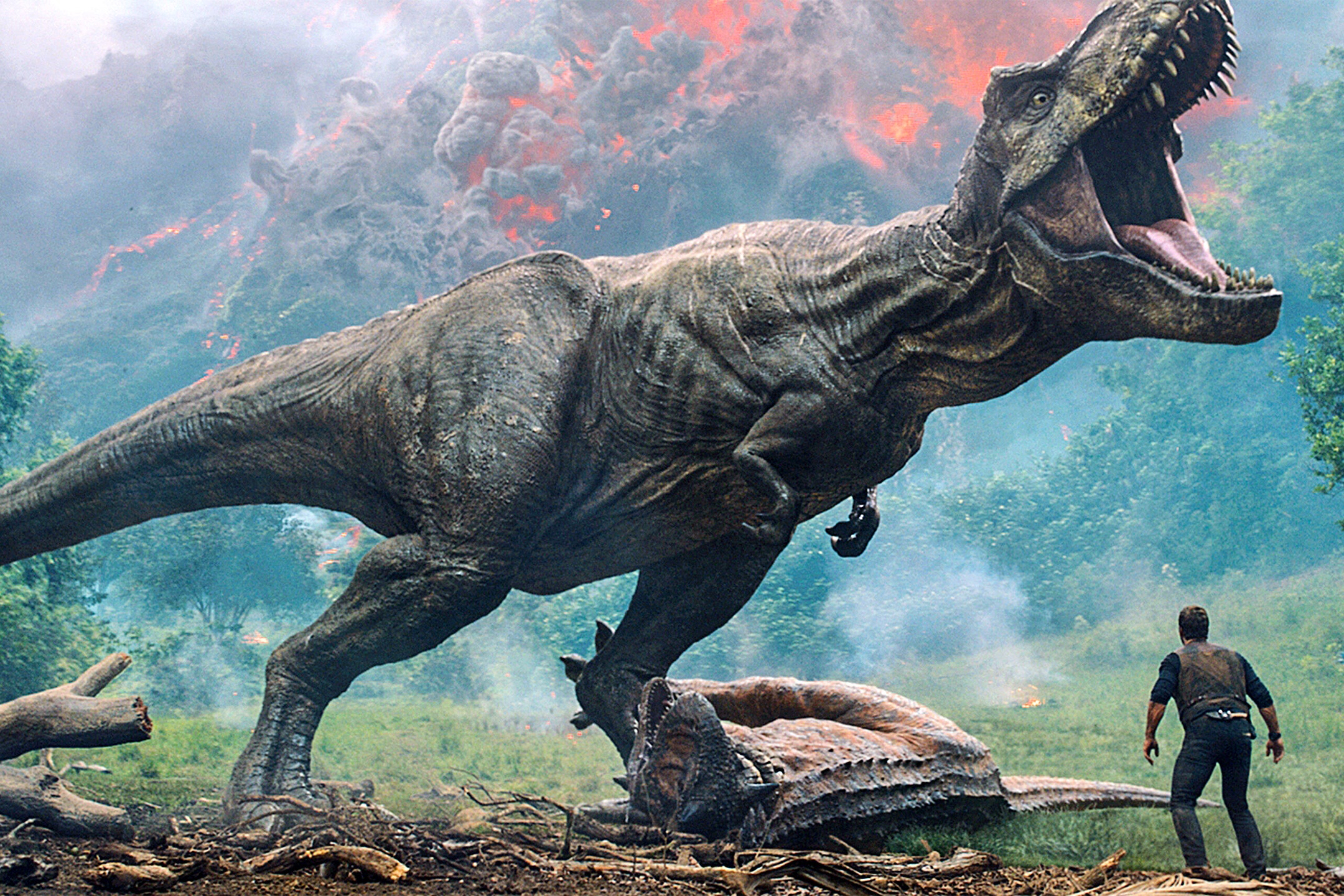
The MVP of the video and the dinosaur world in general, the Tyrannosaurus Rex or the T-Rex is the apex predator of the Cretaceous Period. It is also the most formidable predator to have ever existed and is the poster dinosaur for the Jurassic Park franchise. It is the most popular dinosaur and existed in what is now part of North America alongside other species of dinosaurs such as the Edmontosaurus, the Ankylosaurus, the Alamosaurus, the Pachycephalosaurus, the Nanotyrannus, and the Triceratops.
The T-Rex is an apex predator that grows up to thirteen meters and is also the largest species of its genus Tyrannosaurid.
During the flashback scene, it engages the Giganotosaurus in a fight but is killed. After the mosquito bites the right side of the dinosaur’s snout, future scientists of Jurassic Park use that DNA to create Rexy, which is a descendant of the T-Rex that lost the battle against the Giganotosaurus.
As juveniles, the T-Rex cloned by InGen had fully scaled skin. As an adult, the T-Rex went to have a feathered body at least at some parts. This is something that was seen in several natural-born dinosaurs of the Cretaceous Period as the adult Tyrannosaurus Rex was famous for a shop sample of filamentous feathers on its back, shoulders, and neck. Its thick skin allowed it to fight the Velociraptors and withstand its razor-sharp toe-claws.
The hybrid, Indominus Rex, had claws that were so sharp that it could outpower a grown Apatosaurus. A strong bite by the creature had the power to crack the bulletproof glass used in a Gyrosphere.
The InGen bred T-Rexes considered stagnant prey to be less of a threat while moving prey were more threatening. These carnivores are also solitary creatures, even though they have been seen roaming the Isla Sorna in a pack.
What did you think of these species of dinosaurs? Did you enjoy this video? If yes, don’t forget to like and comment on this video. Till then, goodbye. And have a nice one!
